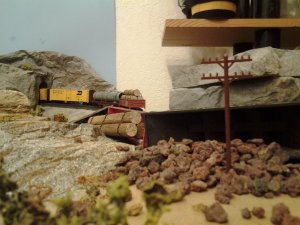MikeOwnby
Active Member
Having not been able to find coal loads for some of my coalporters, I'm perfectly content to make my own. I know that it needs a lightweight foam filler upon which WS coal or cinders can be added & glued like ballast. Correct so far, right? Or maybe not, so tell me if that's not valid.
Now, thing is I'm doing this in N-scale, and trying to cut down tiny filler blocks to fit just perfect in these little coalgons is going to be a right big pain in the rear. Is there any sort of liquid, maybe akin to window and door foam, but not nearly as aggressively expanding? Something that can be poured in to fill up the majority of the void without weighing the car down too much? Obviously with the talk of glue and liquid foam I'm *really* not worried about ever taking it back out and am fine with it being a permanent load. I'd just like something that isn't going to make me want to throw the car across the layout while shaving on bits of foam or balsa wood dozens of times after times after times...
Sorry if this has already been addressed, but all I was seeing in a search was HO scale and putting blocks of Styrofoam and/or balsa wood into them.
Now, thing is I'm doing this in N-scale, and trying to cut down tiny filler blocks to fit just perfect in these little coalgons is going to be a right big pain in the rear. Is there any sort of liquid, maybe akin to window and door foam, but not nearly as aggressively expanding? Something that can be poured in to fill up the majority of the void without weighing the car down too much? Obviously with the talk of glue and liquid foam I'm *really* not worried about ever taking it back out and am fine with it being a permanent load. I'd just like something that isn't going to make me want to throw the car across the layout while shaving on bits of foam or balsa wood dozens of times after times after times...
Sorry if this has already been addressed, but all I was seeing in a search was HO scale and putting blocks of Styrofoam and/or balsa wood into them.


